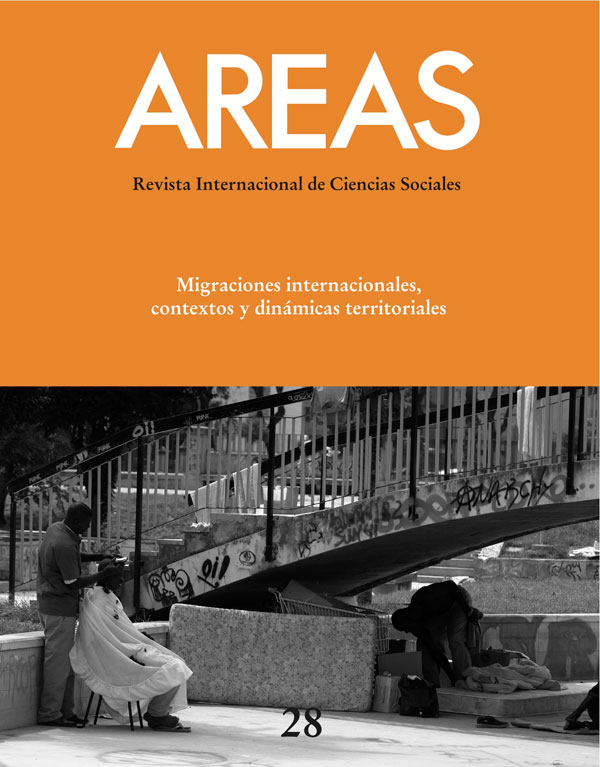La inserción residencial de los inmigrantes en la costa mediterránea española. 1998-2007. Co-presencia residencial, segregación y contexto local
Resumen
Este artículo presenta las características más destacadas de la inserción residencial de los inmigrantes en la costa mediterránea española. Se analiza el proceso en las ciudades de Valencia y Murcia, su evolución en el período 1998-2007, y se compara con otras ciudades, Barcelona, y comarcas, Almería. Nuestro análisis constata la existencia de dos modelos de inserción residencial. Uno, mayoritario, de copresencia residencial. Los inmigrantes se distribuyen desigualmente en la trama urbana pero el ámbito residencial es compartido entre vecinos de distintos orígenes. Otro modelo, propio de determinadas comarcas de agricultura intensiva, de segregación residencial según el cual los inmigrantes, particularmente si son marroquíes, viven en diseminados o en las pedanías y los autóctonos en los núcleos urbanos. A la separación física de las viviendas hay que sumar la distancia social que así se ha consolidado.
Se presentan las características más relevantes –urbanas y sociales- de estos dos modelos de inserción residencial así como su evolución en los últimos años. Además, estos tipos residenciales adoptan formas y concreciones relativamente distintas según los distintos contextos locales que conforman la ciudad, el pueblo o la comarca, como marco específico de límites y posibilidades para la inserción social de los inmigrantes.
Descargas
-
Resumen367
-
PDF260
Las obras que se publican en esta revista están sujetas a los siguientes términos:
1. El Servicio de Publicaciones de la Universidad de Murcia (la editorial) conserva los derechos patrimoniales (copyright) de las obras publicadas, y favorece y permite la reutilización de las mismas bajo la licencia de uso indicada en el punto 2.
2. Las obras se publican en la edición electrónica de la revista bajo una licencia Creative Commons Reconocimiento-NoComercial-SinObraDerivada 3.0 España (texto legal). Se pueden copiar, usar, difundir, transmitir y exponer públicamente, siempre que: i) se cite la autoría y la fuente original de su publicación (revista, editorial y URL de la obra); ii) no se usen para fines comerciales; iii) se mencione la existencia y especificaciones de esta licencia de uso.
3. Condiciones de auto-archivo. Se permite y se anima a los autores a difundir electrónicamente las versiones pre-print (versión antes de ser evaluada) y/o post-print (versión evaluada y aceptada para su publicación) de sus obras antes de su publicación, ya que favorece su circulación y difusión más temprana y con ello un posible aumento en su citación y alcance entre la comunidad académica. Color RoMEO: verde.






